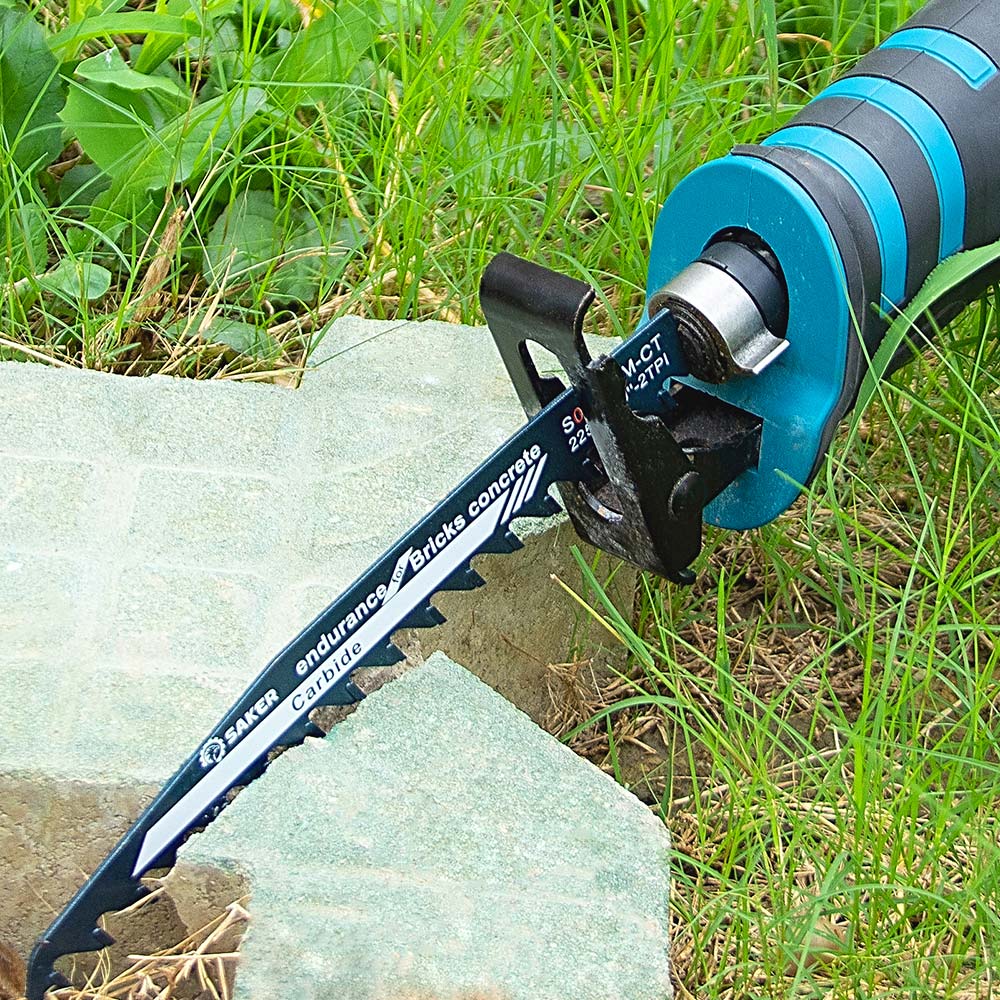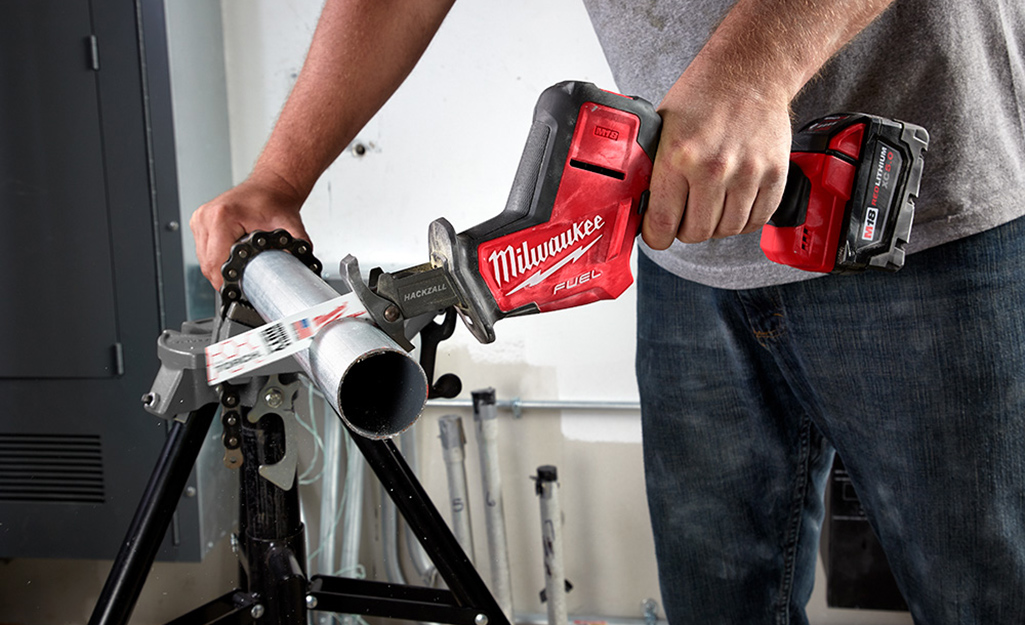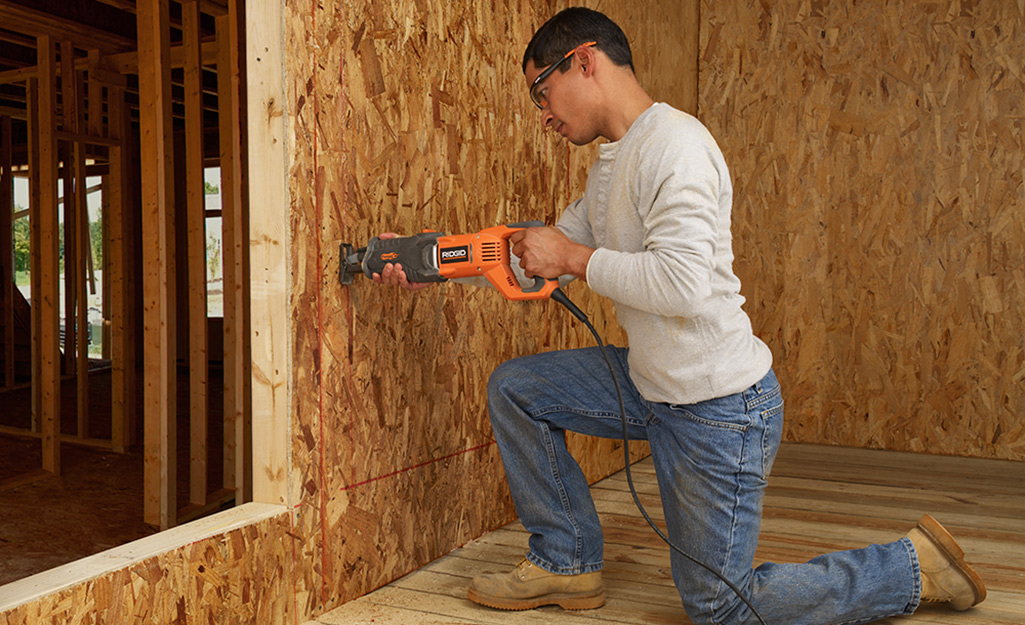Best Reciprocating Saws for Your Project

Published September 6, 2023
Most saws primarily make precise cuts. Reciprocating saws make rough cuts or assist in demolition. They deliver a lot of blade power, quickly slicing through materials. They work on metal, masonry, stucco and wood. Or, they work on plaster, fiberglass, composites and drywall.
Table of Contents
Things to Consider When Choosing a Reciprocating Saw
Corded vs. Cordless
Tips & Features
Things to Consider When Choosing a Reciprocating Saw

Four important factors in choosing a saw are:
- Size
- Speed
- Stroke Length
- Material
The size of saw you need will depend on the work you do. There are compact, one-handed reciprocating saws. These work best on softer materials. Heavy-duty saws work best on heavy-duty materials, like metal.
Speed is measured by strokes per minute. Most saws have an SPM of 2,500 to 3,000. The higher the SPM, the quicker a saw can cut.
Stroke length is the maximum distance a saw's blade can cut. These range from 1/2-inch to 1 1/2-inch. A longer stroke length provides better versatility. If you plan to cut thick materials, this is an important factor.
If you plan to work with a specific material all the time, find a model suited for it. This is an important factor if you are woodworker or metalsmith.
Corded vs. Cordless

Reciprocating saws are available in corded and cordless models. Consider added convenience, power and run times when shopping.
Corded models:
- They offer more power for heavy-duty cutting. Since they're plugged in, they have unlimited run times.
- They don’t have a battery.
- They often weigh less than cordless models.
- The power cord may hinder maneuverability. A flexible rubber cord is more convenient than a plastic cord.
- If working overhead, use a lightweight corded saw to reduce fatigue.
Cordless models:
- They offer freedom of movement.
- They often weigh more than corded models.
- They require charging between uses and have limited run times.
- Models with lithium-ion batteries have extended battery life. They have longer run times than standard batteries.
Tip: There are pneumatic, or air-powered, reciprocating saws. These are often used in professional shops. They're heavy duty for cutting through metal and difficult materials.
Tips & Features

Choose from different options to customize your saw to meet your needs. Examples are orbital action, lighted plugs or anti-vibration features.
- An adjustable shoe enhances stability and depth-of-cut control. It allows for clear blade and cut line visibility in any position.
- A bag or case protects the saw and accessories during travel and storage. Hard cases provide maximum protection. Choose one that accommodates the maximum blade length you will use.
- Orbital action enables the blade to move up, down, left and right. It creates a more aggressive cutting action for faster cuts. Cutting speed does not slow when the saw is upside down in orbital action mode.
- Tool-less blade change allows fast blade changes and increases efficiency. It enables you to easily switch between tasks.
- Variable speed control allows you to adjust cutting speed. You can easily match the speed to the application and material. A dial offers more accuracy and consistency than a trigger control.
- A lighted plug shows if a tool is powered at a glance.
- Cushion grips improve comfort and control, especially through hot, sweaty jobs.
- Anti-vibration technology helps reduce user fatigue.
Safety Tip: Make sure you’re using the correct blade. Certain blades work best depending on the material you’re cutting through. For example, a fine-toothed blade is best when cutting through metal.
Looking for a tool to complete your project? The Home Depot delivers online orders when and where you need them.


























